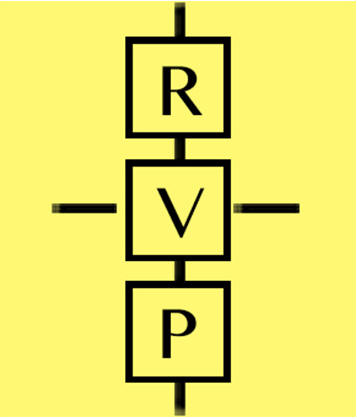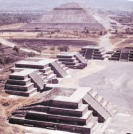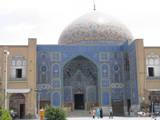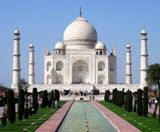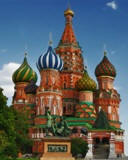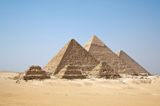Thematic Summary
The following is
a concise thematic overview of the September 15 –
October 17, 2008 five week seminar held in Washington
DC. Sponsored by the Council for Research in Values and
Philosophy, it brought together 28 scholars from 16
different countries (listed below). The full text of the
papers will be published in 2009 under the title, Sacred
and Secular: Complementary
or Conflictual (Washington,
DC: The Council for Research in Values and Philosophy,
2009).
Week I began
with a consideration of the important new work, A
Secular Age (Cambridge,
MA: Belknap, Harvard UP, 2007), by Charles Taylor and
its perceptive narrative description of the gradual
transition across modern times from the age of the
sacred in which unbelief was difficult to a secular age
in which the contrary is true. Noting his focus on the
“social imaginary,” the seminar team sought to locate
this in relation to the psychological structure of the
human person and its faculties so as to appreciate the
mediating role and importance of imagination for all
human thought and action, physical as well as spiritual.
It sought also to extend Taylor’s narrative by exploring
the longer passage of time from the so-called
“primitive” religious cultures to the Axial Age, from
early philosophy to the age of faith.
Week II in
order to proceed from a contemporary public debate on
the relation of the sacred and the secular began from
the political theory of John Rawls. It was noted that
his work, A Theory
of Justice (Cambridge,
MA: Belknap, Harvard UP, 1999 [1971]) proposed removing
religious and other “comprehensive visions” from the
public sphere and placing them behind a “veil of
ignorance.” In this he sought to develop a “public
reason” on the basis of which all can come to agreement
about fair rules and laws. He modified this in his Political
Liberalism (New
York: Columbia University Press, 1993) and still later
in “The Idea of Public Reason Revisited” (The
University of Chicago Law Review (Summer
1997 64.3) 765 – 807), concluding that: “[R]easonable
comprehensive doctrines, religious or non-religious, may
be introduced in public political discussion at any
time, provided that in due course proper political
reasons – and not reasons given solely by comprehensive
doctrines – are presented that are sufficient to support
whatever the comprehensive doctrines are said to
support.”
Week III began
with Habermas’ response, on two principle points, in his
2005 Holberg lecture, “Religion
in the Public Sphere.” The
first is that even this later position of Rawls is
“unfair” by its own liberal democratic standards since
it assumes a secular default position insofar as
religious citizens are required to justify their
political statements independently of their deeply held
beliefs, while secular citizens are not required to make
an artificial split within their own psyches which in
many cases may not even be possible. Rather than
“balancing the cognitive burdens,” only the religious
citizen is required to translate his or her insights
into another, namely, a secular language. In contrast,
Habermas would see religious citizens as needing to be
able to participate in public debate in their own
“language,” and for drafting institutional laws the
secular citizens need to share the necessary burdens of
translating with religious citizens. This changes the
atmosphere from exclusive to inclusive; indeed religious
citizens alone can be the final determinants of the
adequacy of the translation of their views.
This, in turn,
calls for significant hermeneutic insight for which the
seminar team turned to the work of Hans Georg Gadamer’s Truth
and Method (New
York: Continuum, 2003). Two insights stood out. First,
the nature of prejudgments and the impossibility of
escaping them to some neutral position or “blank tablet”
as a point of departure in the Lockean or Cartesian
sense. All are born into a culture and language which
provides the basic world view with which one approaches
life. Hence, prejudgments are indispensable and we must
learn to make them work for us. Second, the importance
of meeting another cultural outlook as a way of being
freed to draw more deeply on one’s own fundamental
values and culture for ways to live in new and changing
times.
Week IV noted
the second of Habermas’ critique of Rawls mentioned
above, namely: that the moral intuitions of the
religious traditions have substantive and experienced
truth content, such as human dignity and solidarity,
accessible to everyone as knowledge and foundational for
democratic life. Hence, it is, for Habermas, in the
interest of the liberal state to have significant
numbers who actively practice their religion lest it be
cut off from “key resources for the creation of meaning
and identity.” He concluded that a post-metaphysical
position must: (1) be prepared to learn from religion
even if remaining strictly agnostic, (2) distinguish
certainties of faith from validity claims that can be
publicly redeemed or criticized, yet (3) refrain from
the rationalist temptation to itself decide which part
of a religious doctrine is rational. This last
proposition replaces Rawls, asymmetrical burden by the
need for deep cooperation of, and with, religious
citizens as they must be the final judge of which of
their tenets have substantive truth content able to be
brought meaningfully into the public sphere. To this he
adds the condition: “…provided [that the truth contents]
can also be spelled out in a generally accessible
language” when moving from the informal public sphere to
the institutional level of parliaments, courts and
administrations.
This, in turn,
directed the seminar team’s attention to Paul Ricoeur’s Symbolism
of Evil (Boston:
Beacon Press, 1969), for its notion of symbol and
narrative. Here also two insights stood out. First, the
way in which the emergence of science freed myth from
the burden of explaining the causes of phenomena,
thereby enabling it more clearly and fully to perform
its function as symbol. And second, that this pointed
inexorably to an immanent grounding in a “surplus of
meaning.” As such it exceeds any human reality including
the declarative ability of language: the “surplus” can
be encountered only in silence.
Week V had
less time but in the newly global context which brings
each people into even more intense relationship with
increasingly diverse peoples its designated issue was
the need for a new paradigm that joins: (a) Gadamer’s
need to encounter the other in order to draw more deeply
upon the roots of one’s own culture, and (b) Ricoeur’s
rooting of cultures in silence before that unutterable
“surplus of meaning” which the religious narrative at
the root of each great civilization implies and
requires.
It seems not
possible even to begin such a task within the present
nominalist/rationalist modern paradigm of a world of
radically single individuals each conceived as distinct
and acting in terms of their separate “self-interest.”
Conceiving religious cultures and their heritages of
human meaning in an abstract and formal manner either:
(a) isolates them from life experience as irrelevant or
even as impediments to one another, (b) understands them
univocously thereby rendering irrelevant the unique
creativity and contribution of other cultures, and even
of one’s own; or (c) sees cultures as essentially
contrasting and by implication conflictual.
Taken together,
this triple threat points to the fact that life in
global times exceeds the modern paradigm in terms of
which present structures have been conceived and
constructed. Whether in the economic or the political,
the military or the communicative order the center no
longer holds: things truly fall apart.
On the contrary,
as one’s culture is one’s sole purchase on meaning and
life, the unique cultures or life projects of the many
peoples must not be dismissed, but protected, promoted
and related. How can this be done? As works of creative
human freedom, cultural traditions are differentiated
from within, and hence are rich, distinct and unique.
Moreover, beyond the divisive ideologies of modernity,
the process of globalization now draws them into an
intensive intercultural and intercivilizational whole.
This, in turn, creates the challenge of finding new ways
of thinking in terms of the unity of the whole, and this
in ways that enable a more ample appreciation of the
fact that the many diverse cultures are deeply related
to each other in and through the very distinctiveness of
their reality.
In order to
appreciate the varied ways of life as complementary,
rather than as conflictual they need to be understood as
varied expressions or images of the one unlimited
existence, consciousness and bliss, to speak with the
Hindu tradition, or perhaps as pointed to by Heidegger’s
sense of the emergence of the Dasein. This is Ricoeur’s
“sacred” or “surplus” which, being beyond anything
human, and hence beyond language, can be expressed only
in symbol and narrative. This is what is experienced and
lived in the religious narratives and rituals which
point beyond secular horizons. These various religious
rituals: of forgiveness and reconciliation, of birth,
marriage and death and of daily life, both personal and
public, enable a participation in the perennial sense of
the sacred perceptively brought to light by Mircea
Eliade in his exploration of sacred space and sacred
time (The Sacred and the Profane: The Nature of
Religion, New York: Harcourt, 1987).
In sum, life
today calls for a paradigm and metaphysics of the
“whole” to enable mutual understanding and communication
between cultures in which each people and civilization
is truly complementary. It is now especially urgent to
appreciate not only the essential differences, but the
relatedness of the world’s cultures in their existential
living of the “surplus,” and from this vantage point to
develop interchange and dialogue. In this way the newly
global age opens new hopes for progress on the basic
human challenge of diversity in unity. Such mutual
appreciation of cultures enables their most basic and
characteristic pursuits to be a process of conscious
convergence, echoing Gadamer’s “fusion of horizons.”
The more
consciously we approach this goal, the genuinely closer
we are to other cultures and civilizations. Taken in
this existential sense, convergence becomes
communication, and in turn founds loving cooperation.
This positive road to peace bespeaks the sacred
character of life in the new global world.
The following are
the 28 seminar participants, representing 16 countries:
The
Visiting Scholars:
Arifa Farid
(Pakistan), Hsien-Chung Lee (Taiwan), Plamen Makariev
(Bulgaria), Agustín Domingo Moratalla (Spain), Hippolyte
Ngimbi Nseka (Congo), Alois Agus Nugroho (Indonesia),
Debika Saha (India)
The Local
Participants:
Margot Badran
(USA), Peter M. Collins (USA), Joe Donders
(USA/Holland), John Farrelly (USA), John Staak (USA),
Gadis Arivia (Indonesia), Lambert Mbom (Cameroon), D.Ali
Aykit (Turkey), Khalil Shadeed (USA), Jia Limin (China).
The Invited
Guest Lecturers:
Karim Crow
(Singapore), Holger Zaborowski (Germany), Abdolkarim
Soroush (Iran), William McBride (USA), Very Rev.
Alexander Abramov (Russia)
The RVP
staff: George
F. McLean (USA), Peter J. Colosi (USA), John P. Hogan
(USA), Florencio Riguera (Philippines), Ahmed Iravani
(Iran).

